 W
WDonato Álvarez was an Argentine general. He fought in the battle of Vuelta de Obligado under the command of Lucio Mansilla. He joined Justo José de Urquiza in his conflict against Juan Manuel de Rosas, and fought in the battle of Caseros. He also fought in the Paraguayan War and the Conquest of the Desert. He died in Buenos Aires in September 23, 1913.
 W
WOlegario Víctor Andrade (1839–1882) was an Argentine journalist, poet and politician, who was born in Brazil. His daughter, Agustina Andrade, was also a poet.
 W
WBernabé Aráoz was a governor of Tucumán Province in what is now Argentina during the early nineteenth century, and President of the short-lived Republic of Tucumán.
 W
WJuan Ramón González de Balcarce was an Argentine military leader and politician.
 W
WJosé Nazario Benavídez was an Argentine soldier who rose to the rank of Brigadier General and played a leading role in the Argentine Civil Wars. He was Governor of San Juan Province, Argentina, for almost twenty years in the mid-nineteenth century. His lengthy political career during a period of great turbulence was due to the great respect in which he was held by enemies as well as friends. After leaving office he was imprisoned and then murdered by his guards.
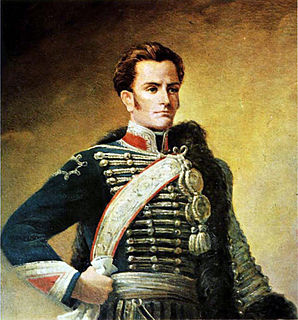 W
WJosé Miguel Carrera Verdugo was a Chilean general, formerly Spanish military, member of the prominent Carrera family, and considered one of the founders of independent Chile. Carrera was the most important leader of the Chilean War of Independence during the period of the Patria Vieja. After the Spanish "Reconquista de Chile" ("Reconquest"), he continued campaigning from exile after defeat. His opposition to the leaders of independent Argentina and Chile San Martin and O'Higgins respectively made him live in exile in Montevideo. From Montevideo Carrera traveled to Argentina where he joined the struggle against the unitarians. Carreras' small army was eventually left isolated in the Province of Buenos Aires from the other federalist forces. In this difficult situation Carrera decided to cross to native-controlled lands all the way to Chile to once for all overthrow Chilean Supreme Director O'Higgins. His passage to Chile, which was his ultimate goal, was opposed by Argentine politicians and he engaged together with indigenous tribes, among the Ranquels, in a campaign against the southern provinces of Argentina. After the downfall of Carreras' ally, the Republic of Entre Ríos, and several victories against the United Provinces of the Río de la Plata Carrera's men were finally defeated by numerically superior forces near Mendoza. Carrera was then betrayed by one of his Argentine helpers, leading to his capture and execution in that city. José Miguel Carrera was of Basque descent.
 W
WSantiago Rafael Luis Manuel José María Derqui Rodríguez was president of Argentina from March 5, 1860 to November 5, 1861. He was featured on the 10 Australes note, which is now obsolete.
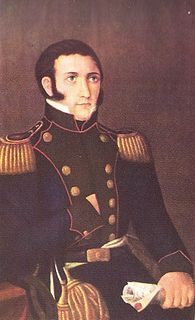 W
WManuel Dorrego was an Argentine statesman and soldier. He was governor of Buenos Aires in 1820, and then again from 1827 to 1828.
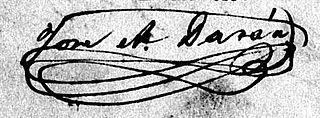 W
WJosé Antonio Durán was an Argentine military man and politician, who participated in the main military actions that occurred during the Argentine Civil War. He served as secretary of the Government of Nazario Benavídez, and as war correspondent of Juan Manuel de Rosas in San Juan Province.
 W
WPascual Echagüe, was an Argentine soldier and politician. He served as Governor of Entre Ríos and Santa Fe provinces and Minister of War and Navy during the governments of Urquiza and Derqui. He participated in the Argentine Civil Wars and the Uruguayan Civil War.
 W
WMaría de la Encarnación Ezcurra was an Argentine politician, wife of Juan Manuel de Rosas.
 W
WTomás Guido. was a general in the Argentine War of Independence, a diplomat and a politician.
 W
WAlejandro Heredia was an Argentine soldier and politician. He fought in the war of independence, and in the subsequent civil war. He was governor and caudillo of Tucumán Province.
 W
WEstanislao López was a caudillo and governor of the province of Santa Fe, Argentina, between 1818 and 1838, one of the foremost proponents of provincial federalism, and an associate of Juan Manuel de Rosas during the Argentine Civil War. He is considered an iconic figure in Santa Fe and one of the most influential political actors in the Argentine conflicts of the 1820s and 1830s.
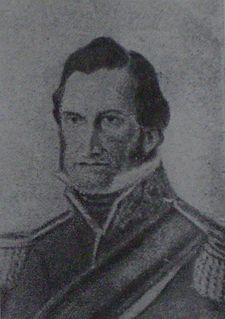 W
WPablo Lucero was an Argentine soldier, a leader of the Federalist Party, and governor of San Luis Province throughout the 1840s.
 W
WLucio Norberto Mansilla was an Argentine soldier and politician. He was the first governor of the Entre Ríos Province and fought in the battle of Vuelta de Obligado.
 W
WTimoteo Maradona was an Argentine official and priest who played a leading role in San Juan Province in the first half of the nineteenth century.
 W
WManuel Vicente Maza was an Argentine lawyer and federal politician. He was governor of Buenos Aires, and was killed after the discovery of a failed plot to kill Juan Manuel de Rosas.
 W
WManuel Moreno was an Argentine politician, brother of Mariano Moreno. He was one of the founders of the Federal Party in the province of Buenos Aires.
 W
WÁngel Vicente "Chacho" Peñaloza was a military officer and provincial leader prominent in both the history of La Rioja Province and the Argentine Civil Wars that preceded national unity.
 W
WJuan Facundo Quiroga was an Argentine caudillo who supported federalism at the time when the country was still in formation.
 W
WFrancisco Ramírez, also known as "Pancho" Ramírez as well as "El Supremo Entrerriano" (1786–1821), was an Argentine governor of Entre Ríos during the Argentine War of Independence.
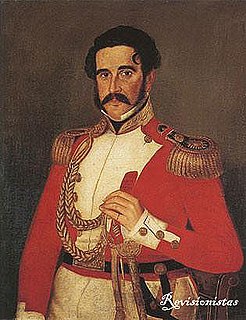 W
WJoaquín María Ramiro (1800–1860) was an Argentine military man, who took part in the Argentine War of Independence, and military civic conflicts between Unitarios and Federales. He held the position of Edecán during the presidency of Santiago Derqui.
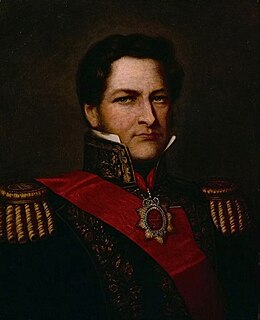 W
WJuan Manuel de Rosas, nicknamed "Restorer of the Laws", was a politician and army officer who ruled Buenos Aires Province and briefly the Argentine Confederation. Although born into a wealthy family, Rosas independently amassed a personal fortune, acquiring large tracts of land in the process. Rosas enlisted his workers in a private militia, as was common for rural proprietors, and took part in the disputes that led to numerous civil wars in his country. Victorious in warfare, personally influential, and with vast landholdings and a loyal private army, Rosas became a caudillo, as provincial warlords in the region were known. He eventually reached the rank of brigadier general, the highest in the Argentine Army, and became the undisputed leader of the Federalist Party.
 W
WJosé Francisco de San Martín y Matorras, known simply as José de San Martín or El Libertador of Argentina, Chile and Peru, was an Argentine general and the prime leader of the southern and central parts of South America's successful struggle for independence from the Spanish Empire who served as the Protector of Peru. Born in Yapeyú, Corrientes, in modern-day Argentina, he left the Viceroyalty of the Río de la Plata at the early age of seven to study in Málaga, Spain.
 W
WMiguel Estanislao Soler was an Argentine general, who fought in the Argentine War of Independence. He was appointed governor of the Banda Oriental by Buenos Aires in 1814, but he was resisted by Artigas and left the city in 1815. He was one of the three generals of the Crossing of the Andes, along with José de San Martín and Bernardo O'Higgins. He also fought in the battle of Ituzaingó, against Brazil.
 W
WJusto José de Urquiza y García was an Argentine general and politician. He was president of the Argentine Confederation from 1854 to 1860.
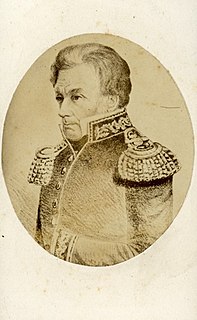 W
WJuan José Viamonte González was an Argentine general in the early 19th century.